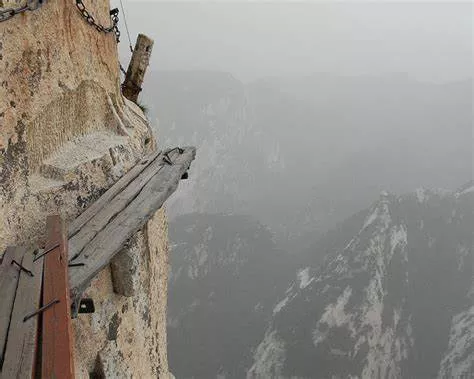Deep in the mountainous borderlands where Yunnan meets Tibet, a road less traveled – quite literally – challenges even the most seasoned overlanders. Bingcha Zuo, the secret “eighth route” to Tibet, remains unmarked on official maps and unknown to most navigation apps. This 280-kilometer trail of switchbacks carved into cliffs makes the notorious Burma Road look like a highway, with sections so narrow that passing vehicles must negotiate centimeter-by-centimeter.
Where Every Kilometer Earns Its Name
The statistics tell a harrowing tale: an average elevation of 3,200 meters, 47 blind hairpin turns, and 12 sections prone to rockfall. Locals speak of the “three no’s” – no guardrails, no pavement, and no margin for error. When two vehicles meet, the dance of survival begins – sometimes requiring one to reverse along cliff edges for hundreds of meters. Yet those who brave it encounter sights that sear into memory: the Nujiang River carving sapphire gorges below, the Gaoligong Mountains’ snow-capped sentinels above, and hidden Dulong villages where time stands still.
A Dying Breed of Adventure
With the better-known Bingcha Cha route now tamed by reconstruction, Bingcha Zuo stands as the last truly wild gateway to Tibet. Veteran driver Li Weibo, who’s navigated all seven main Tibetan access routes, describes it as “playing chess with death” – each move calculated against crumbling road edges and sudden weather shifts. The road’s infamy grows through warnings like “one wheel slip from eternity” and “where GPS signals go to die.”
Why Rational Souls Still Come
The paradox of Bingcha Zuo lies in its cruel beauty. At Luku Village, the road threads through vertical farmland where傈僳族 farmers tend crops on 60-degree slopes. Near Chawalong, hot springs erupt beside the road at 4,000 meters, creating surreal mist-shrouded oases. These moments of transcendence, adventurers say, rewrite one’s understanding of China’s frontier landscapes. As photographer Zhang Rui puts it: “The terror fades; the wonder remains tattooed on your retina.”
Now accessible only between May-October during the brief dry window, Bingcha Zuo represents adventure travel’s last frontier. Local guides advise bringing not just spare tires and winches, but a rediscovered humility before nature’s grandeur. For in these mountains, the land still dictates terms – and that, ultimately, is the route’s irresistible allure.
Related Topic:
- Morocco: A Tapestry of North African Wonders
- Australian Tourism Industry Rides China’s Visa-Free Wave
- 2025 Chinese Opera Festival Debuts in Vienna with Stunning Wu Opera Performance

